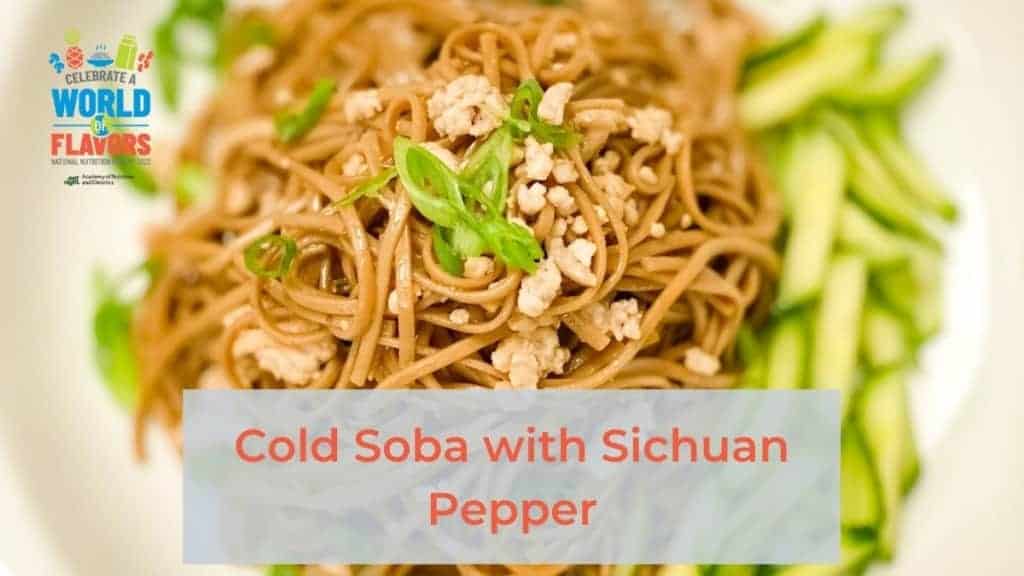National Nutrition Month Global Flavors Recipe Week Four

The final recipe for National Nutrition Month’s tour of global flavors takes us to the Far East and features the traditionally Japanese ingredient soba and the traditionally Chinese ingredient Sichuan peppercorns.
Soba noodles were developed in Japan, but the main ingredient, buckwheat, was cultivated first in China over 8,000 years ago. Despite its name, buckwheat is neither wheat nor a grain; it is considered a pseudograin like quinoa and is itself a gluten-free food. Always read labels when shopping, as many soba noodles on the market are a blend of buckwheat and wheat flour. For a gluten-free noodle, look for one made of 100% buckwheat flour, often labelled Juwari soba.
As they are low glycemic and a good source of magnesium, iron, and dietary fiber, buckwheat soba are a healthy noodle choice. Especially important, buckwheat contains higher levels of the amino acid lysine compared to most staple crops. They also contain all nine essential amino acids and are therefore a complete protein source. Soba noodles cook quickly and require an ice water bath to stop the cooking process in order to avoid becoming sticky and overdone.
The Sichuan peppercorn is not actually a peppercorn at all but a berry from the prickly ash tree, which is in the citrus family. If you have never tasted this ingredient, you are in for an adventure!
More like an experience than a flavor, these little seedpods have a bright, citrusy burst followed by a tingly, numbing sensation inside your mouth. Hydroxy-alpha sanshool is the compound responsible for this sensation. Unlike spicy capsaicin which stimulates nociceptors making us think we are in pain, Sichuan pepper triggers gentle-touch receptors mimicking the sensation of topical anesthetics like lidocaine and is not itself spicy. This ingredient defines Sichuan dishes from other regional Chinese cuisine. The Sichuan peppercorn is one of the spices in the popular Chinese five spice blend with the other four being Chinese cinnamon, star anise, clove, and fennel seed. This unusual spice is worth including among your kitchen flavorings and adds an exotic twist to many dishes.
To view the whole recipe, click the link below:
Published on March 17, 2022
